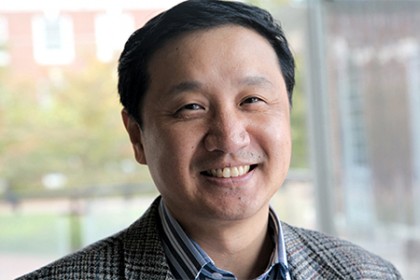Editor's note: This article was originally published in the Summer 2015 issue of JHU Engineering magazine

Image caption: Evan Ma
Five thousand years after the first metallurgists melded copper and arsenic to kick off the Bronze Age, Evan Ma, a professor of materials science and engineering at Johns Hopkins University, is on a fascinating quest to re-engineer the internal atomic architecture of metals.
Ma's specialty is the mysterious yet promising realm of metallic glasses: alloys that can be far stronger and longer-lasting than commonly used metals, such as iron and aluminum, yet are able to be reshaped, poured, and molded without requiring the extreme temperatures of a smelter.
"Our current metals cannot be shaped as easily as such familiar things as window glass, beer glasses, and eyeglasses," says Ma, who in April was among 17 researchers honored as Fellows of the Materials Research Society. "But if we turn metals into a supercooled liquid, then they can flow and be shaped like other glassy forms of matter.
"Polymers, proteins, liquids, plastics, ceramics—if they can all be glass, then metals can be glass too."
The problem with most metals, according to Ma, is that their crystalline structure can cause them to fracture when stressed. Before being cooled to room temperature, the supercooled metallic liquids that Ma works with develop an amorphous structure completely different from crystals, eliminating internal "slip systems" and strengthening the alloy.
As he experiments with new combinations of metals to form glassy alloys, Ma finds that "some elements love each other, but some dislike each other."
"Everything we have in this world is made of materials—materials that have vastly different properties, with distinctly different internal structures," Ma says. "Our challenge as materials scientists is to understand how to controllably manipulate the internal structure to reach the properties we desire."
Posted in Science+Technology
Tagged materials science







